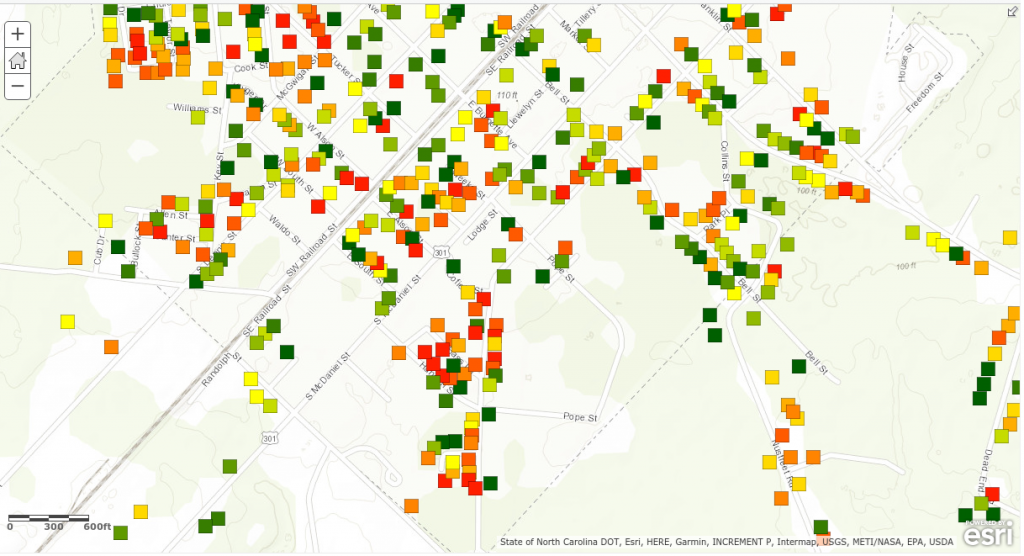Resource Equity
Household Energy Equity in North Carolina

What are the spatial patterns of resource equity?
What are the specific barriers to affordable resource use and how do they change across households and communities?
Are there underlying patterns in the interaction of household characteristics and environmental burdens?
Household structures and characteristics that are intertwined in energy use, particularly in developed countries, including income, employment, number of high-risk occupants, race, and economic variables such as price of energy. Structure characteristics such as age of house and general household efficiency also play a role in household energy use. In many cases, a combination of these burdens leads to households spending a disproportionate amounts of income on energy use. Understanding the interactions between these characteristics and identifying underlying patterns can provide a targeted approach to addressing energy inequity in households.
This research is part of a larger project with the Upper Coastal Plains Council of Government (UCPCOG) in North Carolina We are providing technical support for the creation and implementation of an energy use database that will incorporate multiple levels of energy use, program intervention data, and other relevant information to energy use analysis. This database will be used in an WebMap environment to allow for real time spatial analyses and visualizations of the data. This will provide a tool to share information and identify patterns in energy use to mitigate burdens for household energy users, particularly high risk users in low income households.
High resolution household-level data from multiple sources allows programs to reach households and communities in greatest need of energy burden reduction. Envisioned policy outcomes includes new ways to identify household level burden patterns in order to provide intervention in a timely matter. Further, identifying how household level demographic and energy use patterns interact on a spatial level can provide policy makers and program leaders more effective ways to target households and what mitigation strategies would be most effective in certain areas.